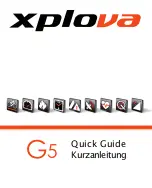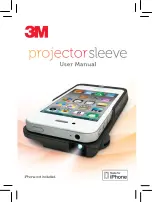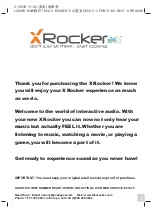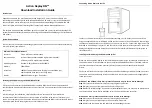
Minimum Storage Temperature
-20°C / -4°F
Maximum Storage Temperature
45°C / 113°F
Systems should be put into storage at 80% SOC and checked monthly to ensure the system SOC does not fall below 20%. At 20%
SOC the battery will self discharge in approximately 2 months.
7. Protection & Faults
• BMS generates faults when maximum operating limits are reached.
• BMS sounds a buzzer when fault limits are triggered.
• BMS monitors the following information for faults and warning:
1. Cell module voltage
2. Battery current
3. Battery temperature
7.1 Faults
In the event of a fault the BMS will sound an audible buzzer warning and the system will shut off after a 120 second delay.
When the operating conditions are within acceptable ranges, the battery can be recovered from Fault by pushing the ON-OFF
button.
Low State of Charge
Charge
Over Voltage
Stop charge
Over Current
Reduce current
Over Temperature
Stop using/let cool
Short Circuit
Check external
circuits
FLASHING LED
7
FAULT LEVELS
Parameter
Trigger Point
High Temperature in Discharge
60°C / 140°F for 2s
High Temperature in Charge
45°C / 113°F for 2s
High Voltage
3.7 V in any cell module 2s
Low Temperature in Discharge
-20°C / -4°F for 2s
Low Temperature in Charge
-1°C / 30°F for 2s
Low Voltage
2.8 V in any cell module for 2s
Over Current
> 45 A for 5 sec.
In-rush Current
200 to 260 A for 640ms
CORRECTIVE ACTIONS
High Temperature
• Stop discharge or charge
• Leave the battery to cool
Low Temperature
• Stop discharge or charge
High Voltage
• If charging stop the charge
Low Voltage
• Do not discharge the battery. Any
discharge current detected will force
the battery into Low Voltage Fault
• The user can charge the battery in
Low Voltage Recovery
• If no charge current is detected
within 2 minutes the BMS will turn
off the battery
Over Current
• Reduce current
Low SOC
• Stop discharge
• Charge the battery




























